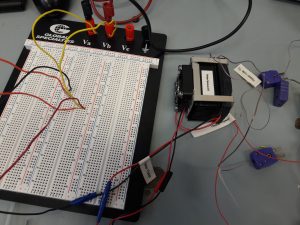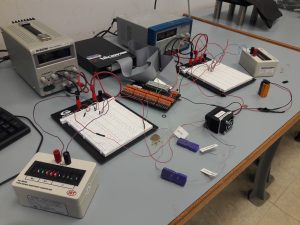

In some materials, electric current can be directly converted into heat (Peltier effect). The reverse is also true – applying heat can be used to generate electricity (Seebeck effect). The students are given a commercial thermoelectric module (composed of P and N type semiconductors), and are able to investigate firsthand how both processes work. Along the way, they can determine the Seebeck and Peltier coefficients for bismuth telluride, and determine a figure of merit for comparison. They are also able to calculate how efficient the module is, and compare that value to the Carnot limit.
Equipment Used
- Commercial thermoelectric (TE) module with an external heater added to the “cold” side
- Thermocouples for measuring the temperature on both sides of the TE module
- Two DC power supplies
- Two breadboards with wires
- Handheld multimeter
- Validyne USB2250 Data Acquisition Board with accompanying EasySense software
- Variable (decade) resistor
Material Tested
- Bismuth Telluride (inside commercial TE module)